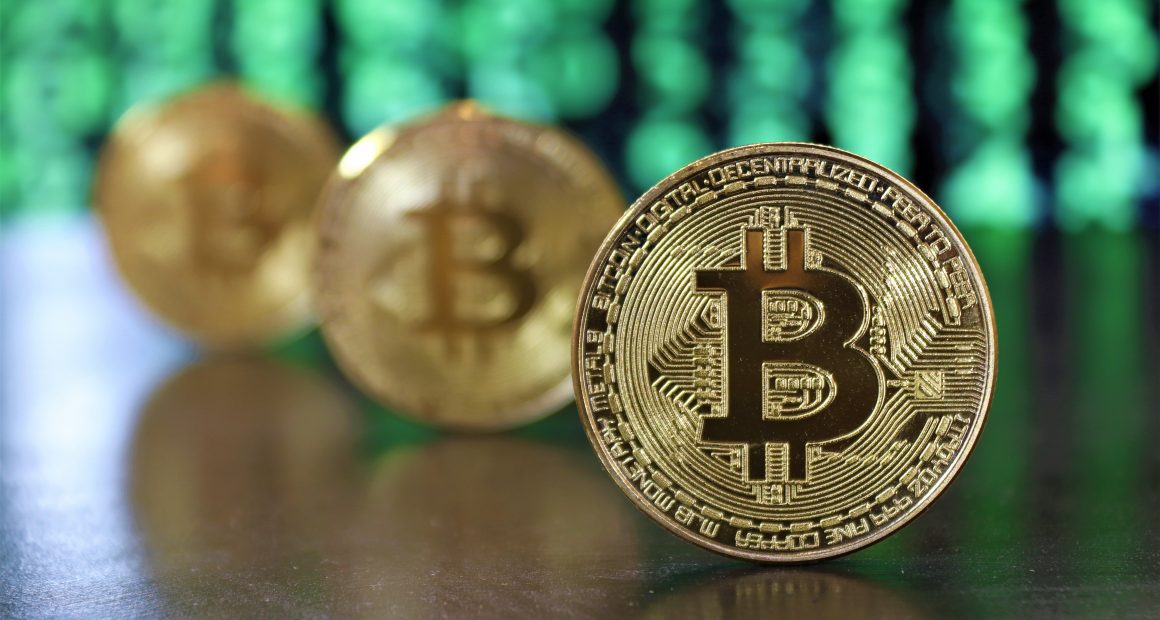This article is written by the Twitter-profile Vekstporteføljen, (@vekstportef)
Unknown territory
Bitcoin is not quite like other assets and investments. It is not a stock, not a traditional currency, not a commodity and not a bond. One must think differently and new. Bitcoin must be seen as a huge network, a huge savings account for the whole world, feel free to think of Bitcoin as a hard drive. What exactly is 1 Bitcoin or 0.1 Bitcoin or 0.01 Bitcoin? These are devices for storing monetary mass.
The price per Bitcoin says something about the size of the network that you get by multiplying the price of 1 Bitcoin by the number of Bitcoins available.
The greater the market value of the Bitcoin network, the stronger the so-called network effect – 1 new Bitcoin owner and 1 new $ in value to the network adds network utility to EVERYONE ELSE on the network.
This is often called a positive feedback loop with increased utility value for all players on the network. Let it sink in. Think Metcalfe’s law and why Facebook became the largest social network ever. When we look at Bitcoin, we should actually use a modified version of Metcalfe’s law as some players bring with them greater monetary mass than others. Some new players that come into the network will be able to bring, for example, $ 10,000,000 against others who buy for $ 1,000 (10,000x as large monetary mass). For example, Tesla placed $ 1.5B on the network).
Buy high, buy safe
The higher the price you buy Bitcoin at, the less the risk of your investment (yes, believe it or not). If you have decided to invest $1000 in Bitcoin, the theoretical downside is always 100%, you can lose everything. But where do you think it’s easiest to lose everything? – to bet $1000 on Bitcoin when the exchange rate is $ 100 or $ 47,000? At $ 100, you get a weird, obscure network of internet money that almost no one has heard of. At $ 47,000, you buy into the same network as players such as Massachusetts Mutual Life Insurance Company, Guggenheim Funds, PayPal and Tesla and over 100 million other unique users. Which of the two networks do you think has the greatest chance of success? Which players will be involved when the Bitcoin price stands at $ 100,000? Amazon? JP Morgan? Google?
When Bitcoin was $ 100, the network was a “campfire”, at $ 45,000 Bitcoin is a “forest fire”. Which fire is easiest to put out? Bitcoin is an asymmetrical opportunity for you as an investor where the left tail is now in practice chopped off, Bitcoin will not go in $ 0. We’re past that point. Whether Bitcoin could go to zero was a plausible debate a few years ago, but not anymore. The right part of the curve, on the other hand, represents the multiplier. Like all other stores of value, Bitcoin is also a belief system, and belief in the network and the scope of the network has now reached critical mass.
Another self-obscuring effect lies in increased market value (market cap). The larger Bitcoin’s mcap becomes, the harder it becomes to ignore for those who are going to invest money in the financial market (funds, companies, banks, high net worth individuals). The elephant in the room becomes too big to not be included. Which bank will not offer the customer the opportunity to buy shares in an asset that will soon be priced at over $ 1 trillion while at the same time offering other speculative financial products? It was something else when Bitcoin was valued at, for example, $ 1- $ 10B in market value.
For example, in the last 3 years, JP Morgan has turned from calling Bitcoin “junk” and “scam” to looking at it as an investable asset that can be an interesting addition to broad portfolios. Several of the major banks are now reporting increased demand from customers who want to allocate some of their capital to Bitcoin (Morgan Stanley, Goldman Sachs, Deutsche Bank +++)
The larger the Bitcoin concept, the more attractive it will be to build infrastructure around Bitcoin. Just look at the approach from PayPal and Square. What comes next, integration with Apple Pay and Alipay? An effect that arises then is that you as a company cannot let your competitor exclusively offer Bitcoin integration, you must be able to offer the same to keep up. In this way, increased integration leads to increasingly accelerated integration and a self-reinforcing effect.
Worldwide savings account
The higher the market value Bitcoin achieves, the higher “monetary liquidity” occurs. If Bitcoin had a mcap of $ 1B, the storage capacity would not have been as interesting in terms of monetary liquidity. If Bitcoin was worth $ 1B and someone wanted to place $ 100M, they would have taken up 10% of the entire network or “hard drive”. It would not have been easy to get in or out without pushing the price dramatically. To store large sums of money, the total monetary liquidity or the size of the hard drive must increase.
If Bitcoin is to fill the role of gold as a store of value, Bitcoin must withstand movements of many billions of dollars in and out daily without significant price movements. Then the monetary liquidity must go up and Bitcoin must go up in price to increase the market cap / «hard drive». If, on the other hand, the market value of Bitcoin is $ 1T and someone wants to place $ 100M, this corresponds to 1/10000 of the “hard drive” as opposed to 10% at $ 1B marketcap. When the network gets such a size will such a buy / sell could be completed without moving prices, and Bitcoin works even better for its purpose.
Bitcoin is a worldwide savings account in Cyberspace, whether you are rich or poor. What happens when everyone starts putting money into this savings account? Market cap about $ 880B (price $ 47,000) is not enough to store the ever-increasing volume of money, price per unit must go up to increase “storage capacity” to several trillion USD. When the big funds and the ultra-rich are going to invest money for the purpose of being a store of value, they are not investing $ 1M, they are investing $ 10-100M each – at least. It then quickly becomes “full” on the network and the price per Bitcoin must go up to expand the network’s hard drive. Gold as a store of value, for example, has a market cap of about 10 trillion USD. Should a similar amount of money enter the Bitcoin network, the price per Bitcoin must be up to about $ 500,000.
And the money is out there, in large quantities. Cathie Wood in the ARK funds has estimated that if the S&P500 companies invest 1% of the cash in Bitcoin, this will amount to a monetary mass equivalent to several hundred billion dollars, and then the “storage capacity” of the Bitcoin network must be increased and the price of Bitcoin, which is a proxy on the network-size, will increase by $ 40,000 (BTC price x number of BTC = network size = total monetary mass stored in the “hard drive”). And this is if the S&P500 companies invest only 1%.
Tesla invested significantly more than 1% of its cash when it purchased for $1,5B in January 2021. And what happens if companies throughout Russell 3000 buy 1%, or 2%? Or 5%? And what happens if European and Asian listed companies buy Bitcoin? And what if private / non-listed companies buy Bitcoin? And what if funds buy? And what if rich individuals invest 1-5% of their funds in Bitcoin on average? How big must the network be to accommodate all of these? The answer is a network size (marketcap) equivalent to several million dollars in Bitcoin price.
Zero cashflow
Bitcoin does not generate cash flow, Bitcoin is not a company, do not think of Bitcoin as a stock price that has reached the ceiling and is “expensive”. Many fall into this «trap». Higher Bitcoin rates only mean that the network increases in size.
People need a new store of value, which is simple, secure, not controlled by any government and online (digital) 24/7. In what other asset can you liquidate values for $ 100M on a Saturday night with a few keystrokes and without the help of a bank? No gold, no real estate, no commodities, no stocks, no bonds. What other asset, store of value, can an immigrant send safely home to his family in, immediately, without being ripped off by transfer fees (the money has to go through several banking stages and takes days) and the family is potentially robbed outside the Forex shop?
Inflation is already present in large parts of the world, and now it is rising significantly in the United States as well, people need to protect their savings. For example, look at the M2 Money Supply in the United States. It is printed and printed and a natural consequence of this constant supply of liquidity is a dilution effect, inflation. Why do you think value investors have had it worse than ever? With 15% inflation for several years to come, there will be little purchasing power left if you have the money in your account. With 15% annual inflation, the purchasing power of $ 100 is reduced to $ 42 in 5 years (!).
Book money does not grow, it is a “constant” that the market now puts a discount on because the money is quickly inflated against assets. The technology company Microstrategy was criticized by investors for having cash on the books, it was seen as a “liability”. They have now exchanged their dollars for Bitcoin to preserve the value of the money. Corporate cash on book is now priced at a high discount as a result of money printing as the money on the balance sheet melts very quickly adjusted to what we have, and will get, of “asset inflation” in the US – and many other places.
“Better at being gold than gold”
In some parts of the world, there is hyperinflation, and the population is doing what they can to immediately exchange their local currency for other entities such as commodities in the hope that the value stays better in this form. In Argentina there are such conditions. The purchasing power of the Argentine peso is weakening very fast. Bitcoin is an incredibly good solution for the people of Argentina, a store of value that does not inflate quickly but is hard-capped at 21 million coins. Many in Argentina are poor and the income they bring in is seen as small sums with Western eyes – should they invest 1000 Argentine pesos (about $ 11) in gold / silver / property to protect their purchasing power? It’s just not possible.
You cannot buy gold for $ 11. Bitcoin can be divided into 8 decimal places, so that people can exchange their Argentine pesos for Bitcoin – even how small the amount should be, and they can do it on their phone via an app. And after they have bought for 1000 Argentine pesos in mobile app, they can send the amount to someone else if they want, immediately, and completely safe – without any bank having to be involved. Nor is there anyone who can seize their values – which is a sad reality in many regimes where the authorities and banks confiscate people’s money.
Gold, on the other hand, is not as hard-capped as Bitcoin, but grows in supply by 2% a year and the higher the price of gold may be, the higher the industry’s incentive to increase gold exports. This applies to everything that can be extracted and produced. The higher the price, the higher the production. No matter how high the price per Bitcoin is, production cannot be increased. At present, 900 BTC per day is mined and this number drops to 450 per day in 2024, and no one can change this. It is pre-programmed.
Bitcoin is better at being “gold” than gold is. No one can send 1000 Oz of gold using their phone from Japan to Brazil on a public holiday. If you have to send Gold around, it is laborious and expensive. Amazon placed tens of thousands of retail stores in 1 website, Facebook placed 2 billion people’s social lives in 1 website. Everything is digitized and put in your pocket and on your phone. A store of value like gold just doesn’t work optimally anymore in the world in 2021. But gold has thousands of years of history, some say, it cannot be outdated as a store of value. Yes, it can. We used wooden boats at sea for thousands of years, that does not mean that we kept the wooden boats after we started sailing with steel hulls (which is better!).
Things are changing, and there is now more innovation every single year than was the case over perhaps several hundred years earlier. Society is undergoing an enormous evolution. Antiques are replaced with digital, smart solutions. Bitcoin is software that can be integrated into countless exciting solutions within fintech and other innovation – you cannot build anything like that around gold. Bitcoin is built on a blockchain that can be integrated into the wallets of the future where digital stable coins (digital USD, digital EURO etc) from the authorities will be available. Young people growing up will have no relationship with gold, they are looking at digital solutions and Bitcoin will be the natural gold for these.
The scarcity of Bitcoin is another matter. A total of 21 million Bitcoin will be made fully diluted. It is estimated that perhaps about 4 million of these have already been lost or are in storage that cannot be opened. These are lost forever. Furthermore, we see daily large volumes are taken off exchanges and placed in Cold-Storage. This is BTC that will not be in circulation for a long time. The market is emptied day by day. In the last 30 days alone, the Grayscale Bitcoin Trust has bought 45,000 BTC against the 27,000 new BTCs that have been mined. And this is just Grayscale.
Yes, of course there is risk with Bitcoin. The list is long and, as I see it, is mainly about regulatory and political issues such as bans, illegalization, etc.
@ Vekstporteføljen (vekstportef)





